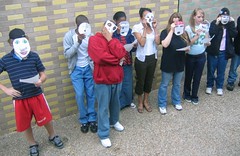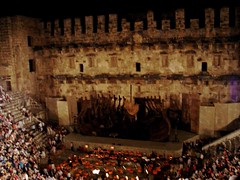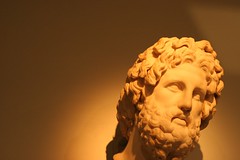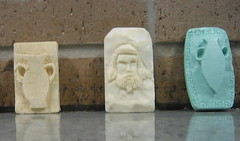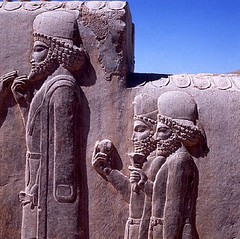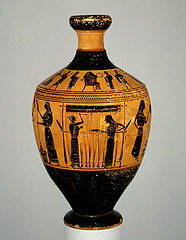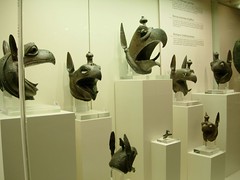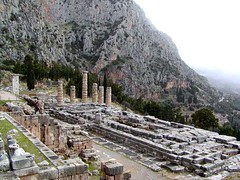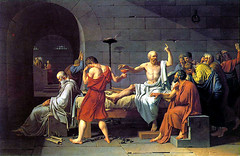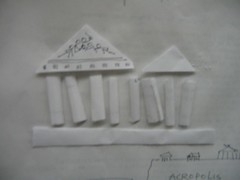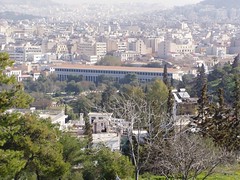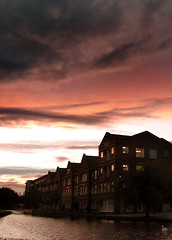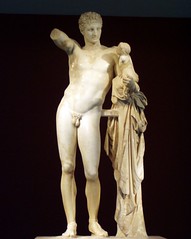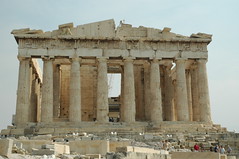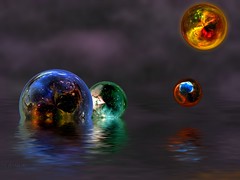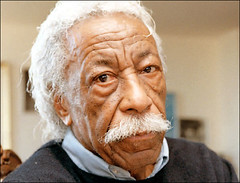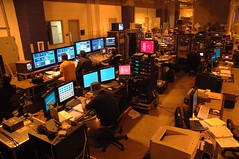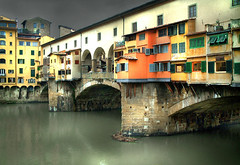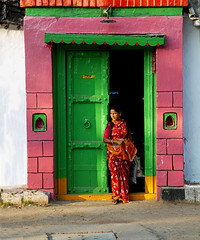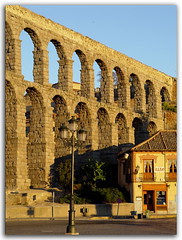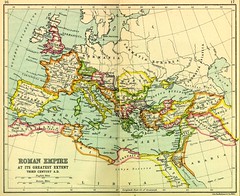The lives of Socrates, Plato and Aristotle were rendered via student scripts in geography classes. The skits represented an attempt to absorb part of the Greek cultural legacy.
Today to each skit we added a commentary chanted in unison by the chorus.
Thursday, March 30, 2006
Amphitheatre Aspendos: the Greek influence on drama
Students presenting skits on the lives of great philosophers were mimicing the Greeks.
Today students made masks, as did the thespians of historic Greece. Inside the ancient masks were mega phones, to amplify the actors' voices. The Greeks were apt students of acoustics.
more vocab:
* tragedy
* comedy
* chorus
* orchestra
* skene (scene)
* mega
* micro
* macro
A classic movie of powerful stereotypes: Zorba the Greek. A modern classic: My Big Fat Greek Wedding.
Today students made masks, as did the thespians of historic Greece. Inside the ancient masks were mega phones, to amplify the actors' voices. The Greeks were apt students of acoustics.
more vocab:
* tragedy
* comedy
* chorus
* orchestra
* skene (scene)
* mega
* micro
* macro
A classic movie of powerful stereotypes: Zorba the Greek. A modern classic: My Big Fat Greek Wedding.
Wednesday, March 29, 2006
Greek philosophers of the Golden Agr, about 450 BC: Socrates, Plato, Aristotle
A super-simple outline to help separate and delineate the philosophers.
Socrates:
The Socratic Method: questioning in search of wisdom. Charged with corrupting the youth and with impiety toward the gods. Accepts indictment, drinks hemlock in famous self-administtered execution.
Plato:
Socrates' student, Plato wrote down - as a dialogue - the wisdom of Socrates. He founded a school, the Academy. He believed women should have rights. In his writings about politics, he asserted that the ideal ruler was a philosopher-king.
Aristotle:
A student of Plato, Aristotle went on to found his own school, the Lyceum. He also tutored Alexander of Macedonia, later to become the conqueror called Alexander the Great. Aristotle is considered the first scientist, for his efforts to identify and order the plants and animals.
Groups of students were asked to create skits on each of these lives from notes taken from A Young Person's Guide to Philosophy.
Independent work:
Research & compare . . .
* Crete and Santorini
* Greek alphabet and the Russian alphabet
* sculpture of Eygypt versus that of Greece
Socrates:
The Socratic Method: questioning in search of wisdom. Charged with corrupting the youth and with impiety toward the gods. Accepts indictment, drinks hemlock in famous self-administtered execution.
Plato:
Socrates' student, Plato wrote down - as a dialogue - the wisdom of Socrates. He founded a school, the Academy. He believed women should have rights. In his writings about politics, he asserted that the ideal ruler was a philosopher-king.
Aristotle:
A student of Plato, Aristotle went on to found his own school, the Lyceum. He also tutored Alexander of Macedonia, later to become the conqueror called Alexander the Great. Aristotle is considered the first scientist, for his efforts to identify and order the plants and animals.
Groups of students were asked to create skits on each of these lives from notes taken from A Young Person's Guide to Philosophy.
Independent work:
Research & compare . . .
* Crete and Santorini
* Greek alphabet and the Russian alphabet
* sculpture of Eygypt versus that of Greece
Tuesday, March 28, 2006
Relief sculpture in soap in geography class / photo Ivy Assiter
Friday is the day to bring a bar of soap to geography class. Students will sculpt a relief sculpture using a heavy paper clip (supplied). The design will follow a Greek motif, such as you see above. The unusually fluent bust in this photo is by Lindsay Brown. The terracotta vessels are called amphorae.
It's a 15 pt. activity.
It's a 15 pt. activity.
Monday, March 27, 2006
Relief sculpture: a term from art and physical geography
Relief is the amount that a landform rises or sinks beneath the plain. Relief sculpture juts away from its background in the same way that a mountain forges upward from its connection with the earth.
To try a simple piece of sculpture is to really appreciate the people who practice this art in the public eye. To attempt sculpture might be to discover a hidden talent, too.
This summer I visited William Joyce's office to see the progress of his various movie projects. At one desk was a young artist sculpting a movie character from clay. The figure was about a foot high. It was a reminder that sculptors are important in entertainment and communications as well as in public art.
To try a simple piece of sculpture is to really appreciate the people who practice this art in the public eye. To attempt sculpture might be to discover a hidden talent, too.
This summer I visited William Joyce's office to see the progress of his various movie projects. At one desk was a young artist sculpting a movie character from clay. The figure was about a foot high. It was a reminder that sculptors are important in entertainment and communications as well as in public art.
First alphabet: the Greek, about the 9th century BC
The oldest Greek literary texts are the Iliad and the Odyssey, two epic poems attributed to Homer, says World Book.
The language of prose writers such as Plato and Aristotle in philosophy, Thucydides in history, and Galen in medicine, was chiefly Ionic or Attic (around Athens)-Ionic. Attic became the standard of classical Greek.
After the conquests of Alexander the Great in the 300's B.C., people in the eastern Mediterranean spoke and wrote a simplified Attic / Greek known as koine (common dialect). The New Testament is written in koine. Greek in this form remained the common language of cultured people of all nations until sometime after the 300's A.D.
Greek has interest for students of English because many of our words are borrowed from Greek, often through Latin or one of the Romance languages. Scientific words from Greek include
astronaut,
ecology,
geography, and
psychiatry.
Words of Greek origin used in the arts include
architect,
criticism,
music, and
poetry.
Most of the alphabets of modern Europe are modeled on the Greek, which was in turn adapted from the alphabet of the Phoenicians sometime between the 1100's and 700's B.C.
* Describe the location of the Phoenicians.
The language of prose writers such as Plato and Aristotle in philosophy, Thucydides in history, and Galen in medicine, was chiefly Ionic or Attic (around Athens)-Ionic. Attic became the standard of classical Greek.
After the conquests of Alexander the Great in the 300's B.C., people in the eastern Mediterranean spoke and wrote a simplified Attic / Greek known as koine (common dialect). The New Testament is written in koine. Greek in this form remained the common language of cultured people of all nations until sometime after the 300's A.D.
Greek has interest for students of English because many of our words are borrowed from Greek, often through Latin or one of the Romance languages. Scientific words from Greek include
astronaut,
ecology,
geography, and
psychiatry.
Words of Greek origin used in the arts include
architect,
criticism,
music, and
poetry.
Most of the alphabets of modern Europe are modeled on the Greek, which was in turn adapted from the alphabet of the Phoenicians sometime between the 1100's and 700's B.C.
* Describe the location of the Phoenicians.
One of the ways we know the details of life in ancient Greece: painted terracotta vases
From the Metropolitan Museum of Art, NYC:
On the shoulder, a seated woman, perhaps a goddess, is approached by four youths and eight dancing maidens; on the body, women are making woolen cloth. One of the most important responsibilities of women in ancient Greece was the preparation of wool and the weaving of cloth. Here, in the center, two women work at an upright loom. To the right, three women weigh wool. Farther to the right, four women spin wool into yarn, while between them finished cloth is being folded. The Amasis Painter is named after the potter, Amasis, who produced the vases.
On the shoulder, a seated woman, perhaps a goddess, is approached by four youths and eight dancing maidens; on the body, women are making woolen cloth. One of the most important responsibilities of women in ancient Greece was the preparation of wool and the weaving of cloth. Here, in the center, two women work at an upright loom. To the right, three women weigh wool. Farther to the right, four women spin wool into yarn, while between them finished cloth is being folded. The Amasis Painter is named after the potter, Amasis, who produced the vases.
The architectural style favored by planters & rockers: Greek temple
Named a national historic monument this week was the small southern mansion called Graceland. Which entertainer made his home here? In what city is it?
Sunday, March 26, 2006
At Olympia, on the Peloponnese, a museum of warriors, beasts, athletes and representations of the gods
Tales of griffins were eagerly reported by Herodotus and in Pliny's Natural History, says wikipedia.org. The griffin was said to build a nest, like an eagle. Instead of eggs, it laid agates. The animal was supposed to watch over gold mines and hidden treasures, and to be the enemy of the horse. The incredibly rare offspring of griffin and horse would be called a hippogriff. Griffin was consecrated to the Sun; ancient painters presented the chariot of the Sun as drawn by griffins. The griffin was a common feature of "animal style" Scythian gold; it was said to inhabit the Scythia steppes that reached from the modern Ukraine to central Asia; there gold and precious stones were abundant; and when strangers approached to gather the stones, the creatures would leap on them and tear them to pieces.
But I come not to discuss such wild things, but the ancient games of Olympia.
Large crowds gathered for religious festivals in ancient Greece, says WorldBook.com. At these festivals, athletes competed in such events as wrestling, boxing, foot and chariot races, jumping, and javelin throwing. Religious festivals also included feasts, colorful processions, and performances of plays. Several religious festivals brought together people from throughout the Greek world. The Olympic Games, the most famous of these festivals, were held every four years in honor of Zeus. Even wars halted during the Olympics. Victory in the games was the highest honor an athlete could achieve.
WorldBook on a comparison between Athens and Sparta:
Athens became the most successful democracy of ancient Greece during the 400's B.C. Every male Athenian citizen had the right to serve permanently in an assembly, which passed laws and determined government policies. The assembly also elected Athenian generals. Each year, the citizens drew lots to select a council of 500 men. This council ran the day-to-day business of government and prepared the bills that the assembly debated and voted on. Jurors were also chosen by lot.
Some wealthy Athenians disliked their system of government. They felt that the poor dominated the government and took advantage of the rich. Most Athenians, however, cherished their democracy.
Sparta was the most powerful oligarchy in ancient Greece. Citizens made up only about 10 percent of the population. Most people were serfs who farmed the land. Two kings, who inherited their thrones, headed the army. Sparta was governed by 5 officials, called ephors, and the gerousia, a council made up of 28 elders and the kings. Citizens elected ephors to one-year terms and members of the gerousia to life terms. Sparta had a citizen assembly. But citizens could not propose issues for debate in the assembly.
But I come not to discuss such wild things, but the ancient games of Olympia.
Large crowds gathered for religious festivals in ancient Greece, says WorldBook.com. At these festivals, athletes competed in such events as wrestling, boxing, foot and chariot races, jumping, and javelin throwing. Religious festivals also included feasts, colorful processions, and performances of plays. Several religious festivals brought together people from throughout the Greek world. The Olympic Games, the most famous of these festivals, were held every four years in honor of Zeus. Even wars halted during the Olympics. Victory in the games was the highest honor an athlete could achieve.
WorldBook on a comparison between Athens and Sparta:
Athens became the most successful democracy of ancient Greece during the 400's B.C. Every male Athenian citizen had the right to serve permanently in an assembly, which passed laws and determined government policies. The assembly also elected Athenian generals. Each year, the citizens drew lots to select a council of 500 men. This council ran the day-to-day business of government and prepared the bills that the assembly debated and voted on. Jurors were also chosen by lot.
Some wealthy Athenians disliked their system of government. They felt that the poor dominated the government and took advantage of the rich. Most Athenians, however, cherished their democracy.
Sparta was the most powerful oligarchy in ancient Greece. Citizens made up only about 10 percent of the population. Most people were serfs who farmed the land. Two kings, who inherited their thrones, headed the army. Sparta was governed by 5 officials, called ephors, and the gerousia, a council made up of 28 elders and the kings. Citizens elected ephors to one-year terms and members of the gerousia to life terms. Sparta had a citizen assembly. But citizens could not propose issues for debate in the assembly.
Friday, March 24, 2006
Lost Civilizations: Time-Life video on Greece: A Moment of Excellence
Lost Civilizations / Greece; a moment of excellence
Answer the questions and take notes on this sheet as you watch the program. Questions are in the order as presented by Time Life.
1)The Parthenon was largely intact until the year __, when it was blown apart by a direct hit during a war. What was being stored in the Parthenon at that time?
___.
2) In the competition between city states on the Aegean, which was one was the usual winner? __
3) What nation was the mutual enemy of all Greek communities? __
4) The filmmakers call the ancient Greeks “a people with a passion for __.”
5) The Parthenon was built at a huge cost to the people of Athens. Who was the leader who oversaw this construction? __
6) How did the government pay for the expenses of building the Parthenon?
A: Taxes on __ .
7) The Parthenon might be compared in several ways to notable buildings in Manhattan. Which building(s)?
8) About how many years were spanned in the construction of the Parthenon?
9) The great leader Pericles married the well-known beauty Aspasia. What kind of female was she? __
10) The Greeks gave us concepts and words such as philo__, pol__, geo__
and bio__.
11) Greek observations and math enabled them to calculate the celestial position of the __ and __.
12) Greek scientists gave us the idea of the smallest particle of matter, the __.
13) Hippocrates was the father of __.
14) Greeks first actuated the mechanisms of this form of government: __.
15) The American founding fathers knew the importance of classical studies. Typically, men like Washington and Jefferson had studied the languages of __ and __.
16) In Athens there was the freedom to have public debate and to let the __ rule.
17) The temple was not simply the site of quiet prayer; on the outside the priests performed bloody __.
18) In a seafaring nation such as Greece the God of the Sea was paramount. He was called __.
19) A famous bronze statue of the sea deity was taken away in a ship (one sunk by a storm) by the conquerors of Greece, the __.
20) On Mt Olympus lived the gods. An array of the gods - “across the gods” - was called a p__.
21) The most important sanctuary of the gods was not in Athens. It was a site called __.
22) At this site the people performed plays, debates and readings to honor the god __, whose temple was near by.
23) In Delphi was a figure of wisdom who would offer answers to life’s difficult questions. This source of wisdom was known as the __.
24) A __ was used as the anonymous mouth of the wise responses.
25) Answers given by this fount of wisdom were not direct and clear. They were open to interpretation, or __.
26) Also near Delphi was Mt Parnassus, where rites were undertaken by women enthralled by the god of wine, __.
27) Drama originated as a holy activity in Dionysian __ festivals.
28) The Greek actress introduced by the program is set to play a tragedy about a woman’s passion unleashed. The play is called __.
29) The group on a Greek stage that represents the common people is called the __.
30) The tragic heroine Medea kills her __.
1. 1687 2. Athens 3. Persia (today’s Iran) 4. excellence 5. Pericles / the era is called the Periclean Age 6. colonies (such as Sicily & Southern Italy) 7. WTC, Empire State Bldg. 8. 50 years 9. courtesan 10. philosophy, politics, geography, biology 11. moon, stars 12. atom 13. medicine 14. democracy 15. Greek, Latin 16. majority 17. sacrifice 18. Poseidon 19. Romans 20. pantheon
21. Delphi 22. Apollo 23. oracle 24. woman 25. ambiguous 26. Dionysus
27. religious 28. Medea 29. chorus 30. children
Relief sculpture via Soap
Fri, Mar 31, 15 pts for the Relief Sculpture activity. a) have a bar of soap (see the class web site for more info) b) attempt the sculpture c) clean up your desk and area. d) Greek design motifs.
Tues, Mar 28: open notes test on Greek studies, including textbook questions, Athenian democracy and video notes. See the web site for additional notes.
Independent work:
* Research and compare the construction of the twin towers of the World Trade Center (a fascinating story) and the Parthenon.
* Research and compare Greek dishes and ingredients with those of France or Germany.
* Other topics as approved via email.
Open notes test Tues, Mar 28, on Athenian democracy, textbook notes, Olympics, etc.
Please be able to define and/or describe these terms:
* demagogue
* ostracism
* slavery
* trial by jury
* checks and balances
* orator
* Pericles
* Socrates
* Plato
*spa
* males
* landowners
* barbarians
* empire: S Italy (Napolis), Sicily
* exile
* Sparta Vs. Athens
Sparta: militaristic, fitness oriented, majorty slave population, accomplished in music, conservative, xenophobic, little philosophy or art.
Athens: artistic, philosophy-oriented, accomplished in design, liberal, democratic.
* demagogue
* ostracism
* slavery
* trial by jury
* checks and balances
* orator
* Pericles
* Socrates
* Plato
*spa
* males
* landowners
* barbarians
* empire: S Italy (Napolis), Sicily
* exile
* Sparta Vs. Athens
Sparta: militaristic, fitness oriented, majorty slave population, accomplished in music, conservative, xenophobic, little philosophy or art.
Athens: artistic, philosophy-oriented, accomplished in design, liberal, democratic.
Thursday, March 23, 2006
Jacques-Louis David, The Death of Socrates
Condemned to death or exile by the Athenian government for his teaching methods, which aroused scepticism and impiety in his students, Socrates heroicly rejected exile and accepted death from hemlock.
This depiction of the thinker's death is by Jacques-Louis David, a French artist of the late 1700's.
Socrates had helped defend Athens in the wars against Sparta. In the wake of the city's defeat the leaders felt anyone who didn't reflect positively on Athena was threatening the community. Rather than escape his sentence by choosing exile, Socrates accepted the verdict
This depiction of the thinker's death is by Jacques-Louis David, a French artist of the late 1700's.
Socrates had helped defend Athens in the wars against Sparta. In the wake of the city's defeat the leaders felt anyone who didn't reflect positively on Athena was threatening the community. Rather than escape his sentence by choosing exile, Socrates accepted the verdict
Making a relief sculpture via soap carving, Fri, Mar 31
Buy an extra bar of soap and plan to use it in a sculpture to be carved in geo class Fri, Mar 31. The only way to really understand the ancient art of relief sculpting is to try it oneself.
Greek motifs will be our subject: letters from the Greek alphabet, temple facades and even philosophers' faces. The soap (Ivory is recommmended because it is soft and forgiving but any brand or color will be fine) will be sculpted with large paper clip wire, which I will supply.
15 pts. for bringing the soap, participating in the exercise, and for cleaning up your area afterwards.
Greek motifs will be our subject: letters from the Greek alphabet, temple facades and even philosophers' faces. The soap (Ivory is recommmended because it is soft and forgiving but any brand or color will be fine) will be sculpted with large paper clip wire, which I will supply.
15 pts. for bringing the soap, participating in the exercise, and for cleaning up your area afterwards.
Tuesday, March 21, 2006
Birth of democracy: view of the Agora from Pnyx, the hillside where the Athenian Assembly met
The handout called Athenian Democracy begins with Orators and Demagogues and lists the qualifications needed to participate in the deliberations of the Assembly. Excluded were women, Greeks from the colonies (such as Napolis), slaves (33% of the population, acc. to the Doerling-Kinserly book Ancient Greece) and non-Greeks, known as barbarians.
Checks and balances: ostracism, rotated duties ("term limits"), freedom of speech, playwrights' presentations and the work of philosophers.
Curiously, the Greeks of 500 BC developed a system of Trial by Jury.
On the subject of women's roles, please note the term courtesan. These women held high status in ancient Greece.
A courtesan is a person paid and/or supported for the giving of social companionship and intimate liaisons to one or more partners. The word is generally reserved for those who enjoyed the highest social status for such services, says wikipedia.org.
Whether the role of courtesans should be romanticized or scorned is a matter of dispute. On the positive side, they had freedoms that were extremely rare for other women at the time. They were not only financially comfortable (when business was good), but financially independent, with control of their own resources rather than dependency on male relatives. They were very well-educated, compared even to upper-class women, and often held simultaneous careers as performers and artists. On the negative side, courtesans were, as a means of survival, dependent on upper-class "protectors" to provide them with shelter and support. They were required to provide charming companionship for extended periods, no matter what their own feelings might be at the time. They were also, because of the sexual aspects of their profession, subject to lower social status and religious disapproval.
Baklava, biscotti, pasta and sauce: thanks and congrats to the generous chefs who've added tastes of the Mediterranean to recent classes. Among them: Suparsh Tanga, Ashley Hazel, Kaitlyn Kehoe, Raciel Pintado, Matthew Geeen, Martin Marak, Meaghan Connor.
What is the agora? The forum of a Greek city.
From answers.com:
agora (ăg'ərə) [Gr.,=market], in ancient Greece, the public square or marketplace of a city. In early Greek history the agora was primarily used as a place for public assembly; later it functioned mainly as a center of commerce. Usually in a readily accessible part of the city, it was often surrounded by the public buildings, such as the royal palace, the law courts, the assembly house, and the jail. A favorite architectural device was the colonnade surrounding the agora. One of the highest honors was to be granted a tomb in the agora. The agora was similar to the Roman forum.
Do you relate to the syndrome called agoraphobia?
Fear of open spaces or of being in crowded, public places like markets. Fear of leaving a safe place.
Checks and balances: ostracism, rotated duties ("term limits"), freedom of speech, playwrights' presentations and the work of philosophers.
Curiously, the Greeks of 500 BC developed a system of Trial by Jury.
On the subject of women's roles, please note the term courtesan. These women held high status in ancient Greece.
A courtesan is a person paid and/or supported for the giving of social companionship and intimate liaisons to one or more partners. The word is generally reserved for those who enjoyed the highest social status for such services, says wikipedia.org.
Whether the role of courtesans should be romanticized or scorned is a matter of dispute. On the positive side, they had freedoms that were extremely rare for other women at the time. They were not only financially comfortable (when business was good), but financially independent, with control of their own resources rather than dependency on male relatives. They were very well-educated, compared even to upper-class women, and often held simultaneous careers as performers and artists. On the negative side, courtesans were, as a means of survival, dependent on upper-class "protectors" to provide them with shelter and support. They were required to provide charming companionship for extended periods, no matter what their own feelings might be at the time. They were also, because of the sexual aspects of their profession, subject to lower social status and religious disapproval.
Baklava, biscotti, pasta and sauce: thanks and congrats to the generous chefs who've added tastes of the Mediterranean to recent classes. Among them: Suparsh Tanga, Ashley Hazel, Kaitlyn Kehoe, Raciel Pintado, Matthew Geeen, Martin Marak, Meaghan Connor.
What is the agora? The forum of a Greek city.
From answers.com:
agora (ăg'ərə) [Gr.,=market], in ancient Greece, the public square or marketplace of a city. In early Greek history the agora was primarily used as a place for public assembly; later it functioned mainly as a center of commerce. Usually in a readily accessible part of the city, it was often surrounded by the public buildings, such as the royal palace, the law courts, the assembly house, and the jail. A favorite architectural device was the colonnade surrounding the agora. One of the highest honors was to be granted a tomb in the agora. The agora was similar to the Roman forum.
Do you relate to the syndrome called agoraphobia?
Fear of open spaces or of being in crowded, public places like markets. Fear of leaving a safe place.
Friday, March 17, 2006
Irish independence from the British, aka Home Rule, 1921
Erin go bragh! That's Gaelic for "Ireland forever."
There was no Gandhi in the bloody Irish struggle for Home Rule. But, like the people of India, the Irish had long been treated miserably by the British. Fighting against the English troops was most intense between 1916 and 1921.
In 1921 the Irish won their freedom.
There was no Gandhi in the bloody Irish struggle for Home Rule. But, like the people of India, the Irish had long been treated miserably by the British. Fighting against the English troops was most intense between 1916 and 1921.
In 1921 the Irish won their freedom.
Thursday, March 16, 2006
Hand-sketched map quiz Fr, Mar 17: Italy, Greece & neighbors
Please sketch the borders (up to 5 pts.) and the neighbors and cities and bodies of water surrounding Italy and Greece. Touch 3 continents in your map. (15)
Total 20 pts.
Fr, Mar 17.
Vocab -
* biscotti
* How was the wealth of Athens and Sparta and the practice of democracy in Athens developed? slave labor.
* Hebrew & Aramaic are the languages of the scriptures. Much of the writings, however, are found only in Greek. Why?
Total 20 pts.
Fr, Mar 17.
Vocab -
* biscotti
* How was the wealth of Athens and Sparta and the practice of democracy in Athens developed? slave labor.
* Hebrew & Aramaic are the languages of the scriptures. Much of the writings, however, are found only in Greek. Why?
The Celtic cross, lyre and bundle of grapes; comparing profiles of Ireland, Greeece and Italy
Comparing Greece to Italy and Ireland via Infoplease.com
1) All are democracies.
2) All have a high literacy rate.
3) Ireland has about half the area of Greece which has almost half the area of Italy.
4) Eire has about half the population of Greece. Italy has 6 times more people than Greece.
5) All have high life expectancies; about 76 years.
6) Rome & Athens have a similar population at about 3 million. Dublin has only a third of their pop.
7) Greece has the lowest PCI at $21000. Ireland and Italy are similarly well off at $32000 and $28000.
8) Internet access: Italian surfers diminate, at 18.5 M. Way behind them are the Greeks and Irish, with under 2 M each.
9) Today all are members of the European Union (EU). Once their currencies included lira, drachma and pounds.
1) All are democracies.
2) All have a high literacy rate.
3) Ireland has about half the area of Greece which has almost half the area of Italy.
4) Eire has about half the population of Greece. Italy has 6 times more people than Greece.
5) All have high life expectancies; about 76 years.
6) Rome & Athens have a similar population at about 3 million. Dublin has only a third of their pop.
7) Greece has the lowest PCI at $21000. Ireland and Italy are similarly well off at $32000 and $28000.
8) Internet access: Italian surfers diminate, at 18.5 M. Way behind them are the Greeks and Irish, with under 2 M each.
9) Today all are members of the European Union (EU). Once their currencies included lira, drachma and pounds.
Wednesday, March 15, 2006
Biscotti on Mar 19: the Italian celebration of a St Joseph's altar
A Sicilan legend says that during a terrible drought the common people of the rocky island had only fava beans to eat. They appealed to St Joseph and the rains came. In thankfulness they built an altar of food - and welcomed the community to eat.
New Orleans Sicilians are well known for carrying on the tradition. In S'port, according to The Times, you can observe the celebration at St Joseph, St Pius X and Mary, Queen of Peace churches.
Biscotti are hard bread slices - baked with nuts or fruit or seeds - to be eaten on an espresso break.
New Orleans Sicilians are well known for carrying on the tradition. In S'port, according to The Times, you can observe the celebration at St Joseph, St Pius X and Mary, Queen of Peace churches.
Biscotti are hard bread slices - baked with nuts or fruit or seeds - to be eaten on an espresso break.
What's the difference between the home of the athletes, Olympia, and the home of the gods, Mt Olympus?
Mt. Olympus is on the Greek mainland. See it in your atlas. Olympia, the site of temples and stadiums used every 4 years - quadrennially - was on the Peloponnesus. See the ruins of Olympia in a web search.
Sparta Vs. Athens. The mighty city-state of Sparta, too, was on the Peloponnese.
The Ides of March is the famous day(s) of the assassination of Julius Caesar. He was murdered by a group of Senators in a notable use of the pre-emptive strike. He had not done anything to warrant assassination, but his attackers thought that he probably Would wrongly take power one day in the future.
Look at pre-emptive strikes in war, such as the US invasion of Iraq. Israel has also used the pre-emptive strike in Mid Eastern strategy.
But what do we do about the nuclear threat coming from the president of Iran? Does it seem another pre-emptive opportunity to the Bush-Cheney-Wolfowitz team?
The Greek key: a reticulated design used in friezes and other borders and characteristic of Greek pattern.
Sparta Vs. Athens. The mighty city-state of Sparta, too, was on the Peloponnese.
The Ides of March is the famous day(s) of the assassination of Julius Caesar. He was murdered by a group of Senators in a notable use of the pre-emptive strike. He had not done anything to warrant assassination, but his attackers thought that he probably Would wrongly take power one day in the future.
Look at pre-emptive strikes in war, such as the US invasion of Iraq. Israel has also used the pre-emptive strike in Mid Eastern strategy.
But what do we do about the nuclear threat coming from the president of Iran? Does it seem another pre-emptive opportunity to the Bush-Cheney-Wolfowitz team?
The Greek key: a reticulated design used in friezes and other borders and characteristic of Greek pattern.
Tuesday, March 14, 2006
Paper Parthenon Project: 15 pts; due Th, Mar 16
On one sheet in your notebook-
1) Cut out a triangular paper roof support: a pediment. Decorate the pediment with a representation of battle scenes in the relief sculpture. Also make a smaller pediment to represent the rear of the building.
2) Cut and roll and glue the tiny paper columns; make at least 6.
3) Make a long, narrow rectangular piece to represent the frieze, the border along the edge of the roof.
4) Cut and fold a long, rectangular piece to represent the porch - or step - of the temple. Rituals were performed on the steps, acc to A History of the World.
5) Add a sketch of the 60-foot statue of Athena Parthenos (virgin), aka Pallas Athena. See more below.
6) Colorful hand-sketched map of the Aegean region, from Sparta - on the Peoloponnesus peninsula - to Athens, to Asia Minor to Crete, in the Mediterranean.
7) Sketch of the acropolis. Include the tiny temple of Athena Nike as well as the Parthenon. On the hillside of the acropolis is the Roman Amphitheater.
8) On the back: a 5-question, multiple-choice quiz based on the material on your project. A couple of easy ones, a couple of challenging questions. Please add the answers at the bottom of the page.
15 pts. / Thursday.
Athena was a deity of diverse functions and attributes, says Answers.com. Her most conspicuous role was perhaps that of a goddess of war, the female counterpart of Ares. However, she was also a goddess of peace, noted for her compassion and generosity. Like Minerva, with whom the Romans identified her, she was a patron of the arts and crafts, especially spinning and weaving. In later times she was important as a goddess of wisdom.
Athena was also a guardian of cities, notably Athens, where the Parthenon was erected as her temple. In a contest with Poseidon concerning dominion over Attica, Athena made an olive tree grow on the Acropolis while Poseidon caused a saltwater stream to gush from the Acropolis. The other Olympians, asked to judge the contest, decided in favor of Athena.
Her statue, the Palladium, was supposed to protect the city that possessed it. It was said that because she accidentally killed Pallas, she set the name Pallas before her own. Although a virgin goddess, she was concerned with fertility, and at Athens and Elis her worship was notably maternal. Athena is represented in art as a stately figure, armored, and wielding the aegis.
1) Cut out a triangular paper roof support: a pediment. Decorate the pediment with a representation of battle scenes in the relief sculpture. Also make a smaller pediment to represent the rear of the building.
2) Cut and roll and glue the tiny paper columns; make at least 6.
3) Make a long, narrow rectangular piece to represent the frieze, the border along the edge of the roof.
4) Cut and fold a long, rectangular piece to represent the porch - or step - of the temple. Rituals were performed on the steps, acc to A History of the World.
5) Add a sketch of the 60-foot statue of Athena Parthenos (virgin), aka Pallas Athena. See more below.
6) Colorful hand-sketched map of the Aegean region, from Sparta - on the Peoloponnesus peninsula - to Athens, to Asia Minor to Crete, in the Mediterranean.
7) Sketch of the acropolis. Include the tiny temple of Athena Nike as well as the Parthenon. On the hillside of the acropolis is the Roman Amphitheater.
8) On the back: a 5-question, multiple-choice quiz based on the material on your project. A couple of easy ones, a couple of challenging questions. Please add the answers at the bottom of the page.
15 pts. / Thursday.
Athena was a deity of diverse functions and attributes, says Answers.com. Her most conspicuous role was perhaps that of a goddess of war, the female counterpart of Ares. However, she was also a goddess of peace, noted for her compassion and generosity. Like Minerva, with whom the Romans identified her, she was a patron of the arts and crafts, especially spinning and weaving. In later times she was important as a goddess of wisdom.
Athena was also a guardian of cities, notably Athens, where the Parthenon was erected as her temple. In a contest with Poseidon concerning dominion over Attica, Athena made an olive tree grow on the Acropolis while Poseidon caused a saltwater stream to gush from the Acropolis. The other Olympians, asked to judge the contest, decided in favor of Athena.
Her statue, the Palladium, was supposed to protect the city that possessed it. It was said that because she accidentally killed Pallas, she set the name Pallas before her own. Although a virgin goddess, she was concerned with fertility, and at Athens and Elis her worship was notably maternal. Athena is represented in art as a stately figure, armored, and wielding the aegis.
Friday, March 10, 2006
Italy-Greece quiz and notes toward the quiz Tues, Mar 14
1. The capital of Sicily?
2. An island that bridges the continents of Europe and Africa?
3. North African nation that lies closest to Italy?
4. Roman name for Hellas?
5. Sea that separates Greece and Asia Minor?
6. The mare nostrum is what the Romans called this sea: "Our sea!" They owned the lands all round its rim. The sea?
7. Which was the earlier high culture? Greece or Rome?
8. In a city laid out by the Roman plan there was an open square around which were the markets, public buildings and temples of the city center. The name for this rectangular meeting area?
9. In many ways Roman society was determinedly moral and ethical. In one area of public life we see, however, a wild variation from moral balance. In what activity or area was this?
10. The sea that lies between Italy and Slovenia, between Italy and Albania & Greece?
11. Type of Greek column that is most elaborate and most favored by the Romans?
12. City named for a powerful female in the pre-Christian era?
13. Roman god of war?
14. Narrow neck of land connecting larger bodies of land, such as at Corinth, Greece?
15. Phoenicia: was it today's lebanon and Israel or Libya?
16. Which of these statements is true? a) Celts were Gauls. b) Gauls were Celts..
17. At its peak of empire Rome’s population was about a) 50,000
b) 500,000 c) 1 million.
18. Citizen of Rome was a title that conferred civil privileges. Only residents of Rome, however, could obtain that title. T / F
19. The Romans developed a) iron b) steel c) marble d) concrete.
20. The Roman villa was built around an unroofed, open center called an
a) atrium b) garden c) arbor d) pedestal.
1. Palermo
2. Sicily
3. Tunisia
4. Graecia (Greece)
5. Aegean
6. Mediterranean
7. Greek
8. forum
9. colosseum battles; gladiatorial contests
10. Adriatic
11. Corinthian
12. Athens / Athena
13. Mars / see March
14. isthmus
15. Lebanon
16. b
17. c) 1 million
18. F
19. d) concrete
20. a/ atrium
David Macaulay on how we might see the savage entertainment of Roman colosseums:
a) ritual killing as a way of maintaining order.
b) product of a militaristic society.
c) accomodation of death & dying.
Greek cooking
* baklava: 15 pts. when made by student and parent.
* moussaka
* dolmades
* tzatziki sauce
* hummus
* pita bread
* herbed fried potatos
* gyros
* pannini
Opa!
Write about what you learn about Greece by eating at Yeero-Yeero and/ or Athenian Delights.
2. An island that bridges the continents of Europe and Africa?
3. North African nation that lies closest to Italy?
4. Roman name for Hellas?
5. Sea that separates Greece and Asia Minor?
6. The mare nostrum is what the Romans called this sea: "Our sea!" They owned the lands all round its rim. The sea?
7. Which was the earlier high culture? Greece or Rome?
8. In a city laid out by the Roman plan there was an open square around which were the markets, public buildings and temples of the city center. The name for this rectangular meeting area?
9. In many ways Roman society was determinedly moral and ethical. In one area of public life we see, however, a wild variation from moral balance. In what activity or area was this?
10. The sea that lies between Italy and Slovenia, between Italy and Albania & Greece?
11. Type of Greek column that is most elaborate and most favored by the Romans?
12. City named for a powerful female in the pre-Christian era?
13. Roman god of war?
14. Narrow neck of land connecting larger bodies of land, such as at Corinth, Greece?
15. Phoenicia: was it today's lebanon and Israel or Libya?
16. Which of these statements is true? a) Celts were Gauls. b) Gauls were Celts..
17. At its peak of empire Rome’s population was about a) 50,000
b) 500,000 c) 1 million.
18. Citizen of Rome was a title that conferred civil privileges. Only residents of Rome, however, could obtain that title. T / F
19. The Romans developed a) iron b) steel c) marble d) concrete.
20. The Roman villa was built around an unroofed, open center called an
a) atrium b) garden c) arbor d) pedestal.
1. Palermo
2. Sicily
3. Tunisia
4. Graecia (Greece)
5. Aegean
6. Mediterranean
7. Greek
8. forum
9. colosseum battles; gladiatorial contests
10. Adriatic
11. Corinthian
12. Athens / Athena
13. Mars / see March
14. isthmus
15. Lebanon
16. b
17. c) 1 million
18. F
19. d) concrete
20. a/ atrium
David Macaulay on how we might see the savage entertainment of Roman colosseums:
a) ritual killing as a way of maintaining order.
b) product of a militaristic society.
c) accomodation of death & dying.
Greek cooking
* baklava: 15 pts. when made by student and parent.
* moussaka
* dolmades
* tzatziki sauce
* hummus
* pita bread
* herbed fried potatos
* gyros
* pannini
Opa!
Write about what you learn about Greece by eating at Yeero-Yeero and/ or Athenian Delights.
Thursday, March 09, 2006
The Italians and the Greeks: proximate but distant, nonetheless
Today's notes on L'Italia -
Guglielmo Marconi, inventor of wireless telegraphy, about 1900. Marconi was from Bologna.
Frank Sinatra (1915 - 1998), a singer & actor, was from a Sicilian immigrant family. He was raised in Hoboken, NJ.
Map 1:
Sketch a map which shows the steamship journey of the Italian immigrant from Palermo to Ellis Island and thence to the Lower East Side of Manhattan. Between the 1890's and 1920's miilions of Italians from Sicily and the south arrived in the US.
Typical Italian-American occupations: dishwasher, ditch digger, seamstress. Italians were shunted into the worst housing and jobs across America. Their stereotype was not nice: they were supposedly oily, ineducable and prone to felonies. Indeed, some Sicilians brought organized crime with them in the Mafia, aka la cosa nostra ("our thing").
In Shreveport Stan's records was founded by Stanley Lewis, an Italian-American who rose from poverty to become a millionaire in the jukebox and record sales business. In partnership with Chess records, Chicago, he produced regional blues, gospel and rock records. His biggest hits were "Suzie Q," and "Judy in Disguise." (Dale Hawkins and John Fred & the Playboys)
Map 2:
Sketch a version of the map of Italy and Greece.
Which one preceded the other and had the earlier high culture?
Guglielmo Marconi, inventor of wireless telegraphy, about 1900. Marconi was from Bologna.
Frank Sinatra (1915 - 1998), a singer & actor, was from a Sicilian immigrant family. He was raised in Hoboken, NJ.
Map 1:
Sketch a map which shows the steamship journey of the Italian immigrant from Palermo to Ellis Island and thence to the Lower East Side of Manhattan. Between the 1890's and 1920's miilions of Italians from Sicily and the south arrived in the US.
Typical Italian-American occupations: dishwasher, ditch digger, seamstress. Italians were shunted into the worst housing and jobs across America. Their stereotype was not nice: they were supposedly oily, ineducable and prone to felonies. Indeed, some Sicilians brought organized crime with them in the Mafia, aka la cosa nostra ("our thing").
In Shreveport Stan's records was founded by Stanley Lewis, an Italian-American who rose from poverty to become a millionaire in the jukebox and record sales business. In partnership with Chess records, Chicago, he produced regional blues, gospel and rock records. His biggest hits were "Suzie Q," and "Judy in Disguise." (Dale Hawkins and John Fred & the Playboys)
Map 2:
Sketch a version of the map of Italy and Greece.
Which one preceded the other and had the earlier high culture?
Wednesday, March 08, 2006
Worldbookonline.com: Louisiana pays for a statewide subscription; please use it!
From this point on, I will expect all official geography class research to include a visit to worldbookonline.com as well as a citation in your sources.
There are several reasons why:
a) World Book is one of the best possible academic sources.
b) It is paid for by a state subscription.
Wikipedia.org is a terrific site in many ways. But it is a site written by enthusiasts. It does not reach the academic standards set by Worldbook.
Here are your codes:
At school use -
ID#: caddo
password: parish
At home use -
User name: louisiana
password: highschool
Tech support: 1-888-873-4900.
There are several reasons why:
a) World Book is one of the best possible academic sources.
b) It is paid for by a state subscription.
Wikipedia.org is a terrific site in many ways. But it is a site written by enthusiasts. It does not reach the academic standards set by Worldbook.
Here are your codes:
At school use -
ID#: caddo
password: parish
At home use -
User name: louisiana
password: highschool
Tech support: 1-888-873-4900.
Rest in peace: photographer-filmmaker Gordon Parks, age 93 / Chester Higgins, jr
Gordon Parks, a Master of the Camera, Dies at 93
By ANDY GRUNDBERG, NYTimes
Gordon Parks, the photographer, filmmaker, writer and composer who used his prodigious, largely self-taught talents to chronicle the African-American experience and to retell his own personal history, died yesterday at his home in Manhattan. He was 93.
Gordon Parks was the first African-American to work as a staff photographer for Life magazine and the first black artist to produce and direct a major Hollywood film, "The Learning Tree," in 1969.
He developed a large following as a photographer for Life for more than 20 years, and by the time he was 50 he ranked among the most influential image makers of the postwar years. In the 1960's he began to write memoirs, novels, poems and screenplays, which led him to directing films. In addition to "The Learning Tree," he directed the popular action films "Shaft" and "Shaft's Big Score!" In 1970 he helped found Essence magazine and was its editorial director from 1970 to 1973.
Mr. Parks's years as a contributor to Life, the largest-circulation picture magazine of its day, lasted from 1948 to 1972, and it cemented his reputation as a humanitarian photojournalist and as an artist with an eye for elegance. He specialized in subjects relating to racism, poverty and black urban life, but he also took exemplary pictures of Paris fashions, celebrities and politicians.
"I still don't know exactly who I am," Mr. Parks wrote in his 1979 memoir, "To Smile in Autumn." He added, "I've disappeared into myself so many different ways that I don't know who 'me' is."
Much of his literary energy was channeled into memoirs, in which he mined incidents from his adolescence and early career in an effort to find deeper meaning in them. His talent for telling vivid stories was used to good effect in "The Learning Tree," which he wrote first as a novel and later converted into a screenplay. This was a coming-of-age story about a young black man whose childhood plainly resembled the author's. It was well received when it was published in 1963 and again in 1969, when Warner Brothers released the film version. Mr. Parks wrote, produced and directed the film and wrote the music for its soundtrack. He was also the cinematographer.
"Gordon Parks was like the Jackie Robinson of film," Donald Faulkner, the director of the New York State Writers Institute, once said. "He broke ground for a lot of people — Spike Lee, John Singleton."
Mr. Parks credited his first awareness of the power of the photographic image to the pictures taken by his predecessors at the Farm Security Administration, including Jack Delano, Dorothea Lange, Arthur Rothstein and Ben Shahn. He first saw their photographs of migrant workers in a magazine he picked up while working as a waiter in a railroad car. "I saw that the camera could be a weapon against poverty, against racism, against all sorts of social wrongs," he told an interviewer in 1999. "I knew at that point I had to have a camera."
See more in the NYTImes article.
By ANDY GRUNDBERG, NYTimes
Gordon Parks, the photographer, filmmaker, writer and composer who used his prodigious, largely self-taught talents to chronicle the African-American experience and to retell his own personal history, died yesterday at his home in Manhattan. He was 93.
Gordon Parks was the first African-American to work as a staff photographer for Life magazine and the first black artist to produce and direct a major Hollywood film, "The Learning Tree," in 1969.
He developed a large following as a photographer for Life for more than 20 years, and by the time he was 50 he ranked among the most influential image makers of the postwar years. In the 1960's he began to write memoirs, novels, poems and screenplays, which led him to directing films. In addition to "The Learning Tree," he directed the popular action films "Shaft" and "Shaft's Big Score!" In 1970 he helped found Essence magazine and was its editorial director from 1970 to 1973.
Mr. Parks's years as a contributor to Life, the largest-circulation picture magazine of its day, lasted from 1948 to 1972, and it cemented his reputation as a humanitarian photojournalist and as an artist with an eye for elegance. He specialized in subjects relating to racism, poverty and black urban life, but he also took exemplary pictures of Paris fashions, celebrities and politicians.
"I still don't know exactly who I am," Mr. Parks wrote in his 1979 memoir, "To Smile in Autumn." He added, "I've disappeared into myself so many different ways that I don't know who 'me' is."
Much of his literary energy was channeled into memoirs, in which he mined incidents from his adolescence and early career in an effort to find deeper meaning in them. His talent for telling vivid stories was used to good effect in "The Learning Tree," which he wrote first as a novel and later converted into a screenplay. This was a coming-of-age story about a young black man whose childhood plainly resembled the author's. It was well received when it was published in 1963 and again in 1969, when Warner Brothers released the film version. Mr. Parks wrote, produced and directed the film and wrote the music for its soundtrack. He was also the cinematographer.
"Gordon Parks was like the Jackie Robinson of film," Donald Faulkner, the director of the New York State Writers Institute, once said. "He broke ground for a lot of people — Spike Lee, John Singleton."
Mr. Parks credited his first awareness of the power of the photographic image to the pictures taken by his predecessors at the Farm Security Administration, including Jack Delano, Dorothea Lange, Arthur Rothstein and Ben Shahn. He first saw their photographs of migrant workers in a magazine he picked up while working as a waiter in a railroad car. "I saw that the camera could be a weapon against poverty, against racism, against all sorts of social wrongs," he told an interviewer in 1999. "I knew at that point I had to have a camera."
See more in the NYTImes article.
Tuesday, March 07, 2006
Update on presentation guidelines in geography class
Powerpoint-type presentations must follw these guidelines to maximize your academic credit:
* Please use worldbookonline.com in all papers and presentations. The state of Louisiana has paid for a subscription to this excellent source. It presents a balance to the free sites such as the participant-written wikipedia.org.
* Do not make a presentation without having notes - the script - from which to read.
* No more than 3 phrases on the screen along with the image! You must be required to simplify and edit the on-screen material.
* Always base your presentation on 2 topics and present it in comparison essay style.
* Include a relevant map.
* Don't forget the basics: titling, spelling, grammar, logic, multiple sources.
* Please use worldbookonline.com in all papers and presentations. The state of Louisiana has paid for a subscription to this excellent source. It presents a balance to the free sites such as the participant-written wikipedia.org.
* Do not make a presentation without having notes - the script - from which to read.
* No more than 3 phrases on the screen along with the image! You must be required to simplify and edit the on-screen material.
* Always base your presentation on 2 topics and present it in comparison essay style.
* Include a relevant map.
* Don't forget the basics: titling, spelling, grammar, logic, multiple sources.
Mussolini February1943: leader of fascist dictatorship
Fascism is a term coined in Italy by il Duce (the leader), Benito Mussolini. It referred to the fasces, the bundle of rods which were a symbol of authority in the Roman era.
Fascism is a dictatorship characterized by extreme nationalism. The phrase "My country, right or wrong!" reflects the mindless obedience expected of the populace.
Also characteristics:
* Extreme militarism. When even the young and the old are encouraged to don uniforms and participate in military preparedness, the fascist goal of military priority is easier to enforce.
* Control of the media: dictators want to quell dissent and freedom of speech. Mussolini led book burnings.
* Propaganda based on a return to the glory days of the Roman Empire.
Wikipedia.org says:
Benito Amilcare Andrea Mussolini (July 29, 1883 – April 28, 1945) led Italy from 1922 to 1943. He created a fascist state through the use of state terror and propaganda. Using his charisma, total control of the media and intimidation of political rivals, he disassembled the existing democratic government system. His entry into World War II on the side of Nazi Germany made Italy a target for Allied attacks and ultimately led to his downfall and death.
Fascism is a dictatorship characterized by extreme nationalism. The phrase "My country, right or wrong!" reflects the mindless obedience expected of the populace.
Also characteristics:
* Extreme militarism. When even the young and the old are encouraged to don uniforms and participate in military preparedness, the fascist goal of military priority is easier to enforce.
* Control of the media: dictators want to quell dissent and freedom of speech. Mussolini led book burnings.
* Propaganda based on a return to the glory days of the Roman Empire.
Wikipedia.org says:
Benito Amilcare Andrea Mussolini (July 29, 1883 – April 28, 1945) led Italy from 1922 to 1943. He created a fascist state through the use of state terror and propaganda. Using his charisma, total control of the media and intimidation of political rivals, he disassembled the existing democratic government system. His entry into World War II on the side of Nazi Germany made Italy a target for Allied attacks and ultimately led to his downfall and death.
Monday, March 06, 2006
Tuscany / Siena: girls singing in harmony downtown
Tuscany is arguably Italy's best-known region. The history and beauty of the hilly farmland is legendary. Interestingly, Toyota has named its minivan the Sienna, for a Tuscan town, and Porsche has long had a model called the Carrera, another city of Tuscany. Also in the region: Pisa and Firenze.
My overview of what's important in L'italia:
In the heart of Rome is the temple called the Pantheon, still functioning after some 2000 years.
Ciao! means "hello!" or "bye!" in Italian slang.
From Chianti, a vino of Northern Italy, to chiaroscuro, an artist's term which refers to portrayal through light and shadow, the Italians have an enormous impact on the refined life.
On the other hand there's the Sicilian mafia, the cosa nostra.
The map
* Roma and, within it, the Vatican City. The Vatican is one of the tiniest nations and home to il Pape.
* Napoli / Naples / Neapolis (Gk) Neapolitan ice cream! Home of pizza!
* On the Bay of Naples is the Isle of Capri (goats), one of the most ancient resorts. One of Rome's emperors capriciously used Capri as his capital. *
* Looming above Naples bay is Mt. Vesuvius and nearby is the ancient resort called Pompeii.
* Florence / Firenze / "flower" is the center of the region called Tuscany. The Ponte Vecchio is a bridge over the River Arno which features shops built into the structure. "Florentine" indicates high quality in jewelry, in cooking, in crafts.
* The River Arno flows to the sea through Pisa, famous for its bell tower.
* Venetia / Venizia / Venice, is called the "Queen of the Adriatic." Is this where Venetian blinds originated?
* Milano is a center of the fashion industry and city of fine foods and complex recipes. That's why Pepperidge Farms named their light but fine and imperially slim cookie the Milano.
Why study Italy?
* Natural beauty: the Appenino range, the sea, the fertile fields of the Po River valley.
* History: the eras of the Roman Empire and the Renaissance were periods of extraordinary creativity.
* Cuccina, or cooking. From Fettucine Alfredo to Cannoli.
* Foods such as sausages (salami), olive oil and cheeses (ricotta, parmesan, provolone, mozzarella).
* Textiles and fashionable clothing, shoes and bags: Armani, Gucci, Dolce & Gabana, Prada, Versace, etc.
* Manufactured goods such as the Ferrari, Lamborghini, Lancia and Fiat.
* Art by Michaelangelo, Leonardo da Vinci, Donatello and numerous others.
* Vatican City: the tiny nation that is the center of power of the Roman Catholic church.
* The origins of musical art such as opera, ballet and instrument making. See the pianoforte and violincello.
**
Classroom music ...
"Carmina Burana:" secular Medieval tunes in an opera-like choral production (opera means a "work").
**
Tuscany: a region known for its history, landscapes, vineyards, flowers, fine cooking, art and historic towns such as Pisa, Siena and Lucca. Florence is Tuscany's capital.
Sienna, the orangish-red or brownish-yellow color, takes its name from the soil in Tuscany. See Terra di Siena and Terra Cotta ("baked earth") clay. Remember Roman tiles made of terra cotta?
What American region compares to Tuscany?
Napa Valley, California, above San Francisco bay. It is known for vineyards (Gallo, Almaden), fine cooking and hilly beauty.
Mortar & pestle - used by apothecary or chef to grind and blend herbs or medicines. Gives its name to Sauce Pesto.
Pesto sauce includes basil, parmesan cheese, olive oil, pine nuts (pignoli)and garlic. Pesto is herbally greenish and sweet. It is traditionally eaten over pasta.
Pasta: dough.
Did pasta come to Italy from Germany or China? Marco Polo was the likely importer of a recipe for the food, made simply of wheat (one type being semolina) and water.
Here are selected examples:
canelloni: stuffed tube.
capelletti: "little hats;" stuffed.
farfallette: ribbon/bow-shaped.
fettucine: long egg noodles.
lasagna: widest of the flat noodles.
linguini: "little tongues;" narrow.
macaroni: in tubes.
pastina: disks of pasta.
ravioli: filled squares.
rigatoni: ribbed, tubular.
tortellini: ring-shaped and filled.
vermicelli: "little worms;" thin.
**
Sicilian pastry: cannoli. Like ice cream in a tube.
Balsamic vinegar: tart, sweet, dark vinegar, usually combined with olive oil. Used in salads and over pasta.
Calamari: fried baby squid.
**
Italy in WWII
Benito Mussolini was the dictator of Italy who became a partner - creating the Axis powers - to Adolph Hitler. Both espoused Fascism:
a) totalitarian government b) militarism c) anti-Communist d) anti-intellectual. "Fascism" comes from the term for the bundle of rods used as a symbol of power by the Romans.
Italy was liberated in 1944 by the Allies: US, GB, France, Canada, Australia.
**
pianoforte "soft / loud"
* developed about 1700 by Bartolomeo Cristofori of Cremona, Italy.
* harpsichord plucks strings and has only one volume; piano hammers strings and can play loudly or softly.
violin
* Antonio Stradivari and the Guarneri family are the luthiers who develop the 4-string, advanced violin about 1700.
Most notable historic composers:
Giuseppi Verdi
Antonio Corelli
Giacomo Puccini
Antonio Vivaldi
Nicolo Paganini
Harmony Illus. Encyc. of Classical Music
According to Italian language student Chelsea Norden:
bella donna, "beautiful woman"
bell'uomo, "handsome man"
casa, "house"
Salve! "hello"
Buon giornio! "good day!"
Io amore tu, "I love you."
Scusi! "Excuse me!"
Prego, "please"
**
"Pinocchio," classic folk tale
**
Espresso & cappucino
The Italians make il caffe' by forcing steam through the grounds; it is called espresso. Drunk in a tiny cup called a demi-tasse, it is a strong brew. When you make a "cap" of whipped cream and grated chocolate to put atop the espresso it becomes cappucino.
Latte refers to the added milk. Frappe' means frozen or iced. Dip a hard biscuit, called biscotti, into it.
**
Can you name the Western European nations that were part of the Roman Empire? Espana, Gaul & Briton.
Our goal is to know the names of all the nations of the empire that were on the Mediterranean rim.
**
More basic Italian ...
Tu sei cortese! "You are so nice/courteous!"
Grazie! "Thank you!"
Dove 'e il bagno? "Where is the bathroom?"
Catherine d Medici, of the powerful family of Florence (think Rockefellers), married Henri II of France about 1500. She traveled to France with her Florentine cooks - with marvelous recipes - and the controversial custom of using a fork (furca).
In ancient times which class of people would've used all 5 fingers in eating? Which class ate with 3 fingers?
**
In what Roman facility would we see the caldarium, tepidarium and frigidarium? It was a Thermae, or public bathhouse.
The pools above were "hot," "tepid," or "lukewarm," and "cold." What could you do in a bathhouse besides wash and relax in the pools?
Exercise, hear the news, get a snack, have a massage and leave your laundry.
A Roman feast, according to Petronius and the World Atlas of Food: asparagus, truffles, eggs, olives, sausages, oysters and lobsters, for openers. Main dishes were stuffed geese and chickens and pigs, goose-liver pate' and stewed flamingo's tongues and peacock's brains.
Who is David Macaulay? A contemporary
illustrator/author responsible for books such as Cathedral (how they were built), Castle and the popular How Things Work.
This week we're watching a video called "Roman City," based on his book City. It's about the engineering (bridges, aqueducts, etc.), planning (city grid first) and functions (forum, bathhouses, etc.) of a Roman urbis.
**
The Roman Empire lay upon 3 continents. Which ones?
Romulus & Remus: who were they?
What plastic building material was developed by the Romans?
Concrete.
Intersection of the temples, market and government buildings? Place to disseminate news and opinion? The Forum.
Roman villa
A roof opening that allowed the sun and rain to enter the interior of the house? The atrium. The pool in the atrium was the impluvium.
The garden and vineyard flourished under the peristyle, or arbor.
Cave canem: Latin, "Beware the dog."
Cave emtor: "Let the buyer beware."
Roman apartment buildings: Insulae ("islands"). Multi-story buildings of concrete.
My overview of what's important in L'italia:
In the heart of Rome is the temple called the Pantheon, still functioning after some 2000 years.
Ciao! means "hello!" or "bye!" in Italian slang.
From Chianti, a vino of Northern Italy, to chiaroscuro, an artist's term which refers to portrayal through light and shadow, the Italians have an enormous impact on the refined life.
On the other hand there's the Sicilian mafia, the cosa nostra.
The map
* Roma and, within it, the Vatican City. The Vatican is one of the tiniest nations and home to il Pape.
* Napoli / Naples / Neapolis (Gk) Neapolitan ice cream! Home of pizza!
* On the Bay of Naples is the Isle of Capri (goats), one of the most ancient resorts. One of Rome's emperors capriciously used Capri as his capital. *
* Looming above Naples bay is Mt. Vesuvius and nearby is the ancient resort called Pompeii.
* Florence / Firenze / "flower" is the center of the region called Tuscany. The Ponte Vecchio is a bridge over the River Arno which features shops built into the structure. "Florentine" indicates high quality in jewelry, in cooking, in crafts.
* The River Arno flows to the sea through Pisa, famous for its bell tower.
* Venetia / Venizia / Venice, is called the "Queen of the Adriatic." Is this where Venetian blinds originated?
* Milano is a center of the fashion industry and city of fine foods and complex recipes. That's why Pepperidge Farms named their light but fine and imperially slim cookie the Milano.
Why study Italy?
* Natural beauty: the Appenino range, the sea, the fertile fields of the Po River valley.
* History: the eras of the Roman Empire and the Renaissance were periods of extraordinary creativity.
* Cuccina, or cooking. From Fettucine Alfredo to Cannoli.
* Foods such as sausages (salami), olive oil and cheeses (ricotta, parmesan, provolone, mozzarella).
* Textiles and fashionable clothing, shoes and bags: Armani, Gucci, Dolce & Gabana, Prada, Versace, etc.
* Manufactured goods such as the Ferrari, Lamborghini, Lancia and Fiat.
* Art by Michaelangelo, Leonardo da Vinci, Donatello and numerous others.
* Vatican City: the tiny nation that is the center of power of the Roman Catholic church.
* The origins of musical art such as opera, ballet and instrument making. See the pianoforte and violincello.
**
Classroom music ...
"Carmina Burana:" secular Medieval tunes in an opera-like choral production (opera means a "work").
**
Tuscany: a region known for its history, landscapes, vineyards, flowers, fine cooking, art and historic towns such as Pisa, Siena and Lucca. Florence is Tuscany's capital.
Sienna, the orangish-red or brownish-yellow color, takes its name from the soil in Tuscany. See Terra di Siena and Terra Cotta ("baked earth") clay. Remember Roman tiles made of terra cotta?
What American region compares to Tuscany?
Napa Valley, California, above San Francisco bay. It is known for vineyards (Gallo, Almaden), fine cooking and hilly beauty.
Mortar & pestle - used by apothecary or chef to grind and blend herbs or medicines. Gives its name to Sauce Pesto.
Pesto sauce includes basil, parmesan cheese, olive oil, pine nuts (pignoli)and garlic. Pesto is herbally greenish and sweet. It is traditionally eaten over pasta.
Pasta: dough.
Did pasta come to Italy from Germany or China? Marco Polo was the likely importer of a recipe for the food, made simply of wheat (one type being semolina) and water.
Here are selected examples:
canelloni: stuffed tube.
capelletti: "little hats;" stuffed.
farfallette: ribbon/bow-shaped.
fettucine: long egg noodles.
lasagna: widest of the flat noodles.
linguini: "little tongues;" narrow.
macaroni: in tubes.
pastina: disks of pasta.
ravioli: filled squares.
rigatoni: ribbed, tubular.
tortellini: ring-shaped and filled.
vermicelli: "little worms;" thin.
**
Sicilian pastry: cannoli. Like ice cream in a tube.
Balsamic vinegar: tart, sweet, dark vinegar, usually combined with olive oil. Used in salads and over pasta.
Calamari: fried baby squid.
**
Italy in WWII
Benito Mussolini was the dictator of Italy who became a partner - creating the Axis powers - to Adolph Hitler. Both espoused Fascism:
a) totalitarian government b) militarism c) anti-Communist d) anti-intellectual. "Fascism" comes from the term for the bundle of rods used as a symbol of power by the Romans.
Italy was liberated in 1944 by the Allies: US, GB, France, Canada, Australia.
**
pianoforte "soft / loud"
* developed about 1700 by Bartolomeo Cristofori of Cremona, Italy.
* harpsichord plucks strings and has only one volume; piano hammers strings and can play loudly or softly.
violin
* Antonio Stradivari and the Guarneri family are the luthiers who develop the 4-string, advanced violin about 1700.
Most notable historic composers:
Giuseppi Verdi
Antonio Corelli
Giacomo Puccini
Antonio Vivaldi
Nicolo Paganini
Harmony Illus. Encyc. of Classical Music
According to Italian language student Chelsea Norden:
bella donna, "beautiful woman"
bell'uomo, "handsome man"
casa, "house"
Salve! "hello"
Buon giornio! "good day!"
Io amore tu, "I love you."
Scusi! "Excuse me!"
Prego, "please"
**
"Pinocchio," classic folk tale
**
Espresso & cappucino
The Italians make il caffe' by forcing steam through the grounds; it is called espresso. Drunk in a tiny cup called a demi-tasse, it is a strong brew. When you make a "cap" of whipped cream and grated chocolate to put atop the espresso it becomes cappucino.
Latte refers to the added milk. Frappe' means frozen or iced. Dip a hard biscuit, called biscotti, into it.
**
Can you name the Western European nations that were part of the Roman Empire? Espana, Gaul & Briton.
Our goal is to know the names of all the nations of the empire that were on the Mediterranean rim.
**
More basic Italian ...
Tu sei cortese! "You are so nice/courteous!"
Grazie! "Thank you!"
Dove 'e il bagno? "Where is the bathroom?"
Catherine d Medici, of the powerful family of Florence (think Rockefellers), married Henri II of France about 1500. She traveled to France with her Florentine cooks - with marvelous recipes - and the controversial custom of using a fork (furca).
In ancient times which class of people would've used all 5 fingers in eating? Which class ate with 3 fingers?
**
In what Roman facility would we see the caldarium, tepidarium and frigidarium? It was a Thermae, or public bathhouse.
The pools above were "hot," "tepid," or "lukewarm," and "cold." What could you do in a bathhouse besides wash and relax in the pools?
Exercise, hear the news, get a snack, have a massage and leave your laundry.
A Roman feast, according to Petronius and the World Atlas of Food: asparagus, truffles, eggs, olives, sausages, oysters and lobsters, for openers. Main dishes were stuffed geese and chickens and pigs, goose-liver pate' and stewed flamingo's tongues and peacock's brains.
Who is David Macaulay? A contemporary
illustrator/author responsible for books such as Cathedral (how they were built), Castle and the popular How Things Work.
This week we're watching a video called "Roman City," based on his book City. It's about the engineering (bridges, aqueducts, etc.), planning (city grid first) and functions (forum, bathhouses, etc.) of a Roman urbis.
**
The Roman Empire lay upon 3 continents. Which ones?
Romulus & Remus: who were they?
What plastic building material was developed by the Romans?
Concrete.
Intersection of the temples, market and government buildings? Place to disseminate news and opinion? The Forum.
Roman villa
A roof opening that allowed the sun and rain to enter the interior of the house? The atrium. The pool in the atrium was the impluvium.
The garden and vineyard flourished under the peristyle, or arbor.
Cave canem: Latin, "Beware the dog."
Cave emtor: "Let the buyer beware."
Roman apartment buildings: Insulae ("islands"). Multi-story buildings of concrete.
Italy quiz 1
Exploring the Map of L’Italia
1. River Tiber: a) Roma b) Napoli c) Venezia.
2. River Arno: a) Vatican City b) Milano c) Firenze.
3. Po River: a) Roma b) Milano c) Napoli.
4. St. Peter's Basilica: a) Firenze b) Vatican c) Milano.
5. Mt. Blanc: a) Alps range b) Appennino Mountains.
6. The Galleria shopping center: a) Roma b) Firenze c) Milano.
7. This city has a medieval bell tower which has been affected by subsidence: a) Vatican b) Napoli c) Pisa.
8. Minuscule (tiny) nation within Italy: a) Firenze b) Vatican c) Roma.
9. City of the 06 Winter Olympics: a) Turin b) Pisa c) Venezia.
10. Capital of Sicily: a) Napoli b) Vesuvius c) Palermo.
11. Another Italian island: a) Corsica b) Sardinia c) Malta.
12. City at 42N, 12E: a) Milano b) Messina c) Roma.
13. Which is the only consecutively-doubled letter in the word Mediterranean? a) t b) r c) n .
14. Monaco is a nation that borders Italy. T / F
15. More than most European nations, Italy represents a crossroads between between Africa and Europe. T / F
16. The population of Italy is approximately one third that of the US. T/F
17. One of the predominant languages of Italy is French. T / F
18. The population per square mile of Italy is almost double that of the US. T / F
19. New York City’s population is approximately three times greater than the population of Roma. T / F
20. Italy is a a) democracy b) monarchy c) dictatorship.
21. The latitude and longitude of Torino: a) 48N, 2E b) 53N, 21E c) 45N, 7E.
Italy / map exploration
1. a) Roma
2. c) Firenze
3. b) Milano
4. b) Vatican
5. a) Alps
6. c) Milano
7. c) Pisa
8. b) Vatican
9. a) Turin
10. c) Palermo
11. b) Sardinia
12. c) Roma
13. b) r
14. T
15. T
16. F
17. T
18. F
19. F
20. a) democracy
21. c) 45N, 7E
1. River Tiber: a) Roma b) Napoli c) Venezia.
2. River Arno: a) Vatican City b) Milano c) Firenze.
3. Po River: a) Roma b) Milano c) Napoli.
4. St. Peter's Basilica: a) Firenze b) Vatican c) Milano.
5. Mt. Blanc: a) Alps range b) Appennino Mountains.
6. The Galleria shopping center: a) Roma b) Firenze c) Milano.
7. This city has a medieval bell tower which has been affected by subsidence: a) Vatican b) Napoli c) Pisa.
8. Minuscule (tiny) nation within Italy: a) Firenze b) Vatican c) Roma.
9. City of the 06 Winter Olympics: a) Turin b) Pisa c) Venezia.
10. Capital of Sicily: a) Napoli b) Vesuvius c) Palermo.
11. Another Italian island: a) Corsica b) Sardinia c) Malta.
12. City at 42N, 12E: a) Milano b) Messina c) Roma.
13. Which is the only consecutively-doubled letter in the word Mediterranean? a) t b) r c) n .
14. Monaco is a nation that borders Italy. T / F
15. More than most European nations, Italy represents a crossroads between between Africa and Europe. T / F
16. The population of Italy is approximately one third that of the US. T/F
17. One of the predominant languages of Italy is French. T / F
18. The population per square mile of Italy is almost double that of the US. T / F
19. New York City’s population is approximately three times greater than the population of Roma. T / F
20. Italy is a a) democracy b) monarchy c) dictatorship.
21. The latitude and longitude of Torino: a) 48N, 2E b) 53N, 21E c) 45N, 7E.
Italy / map exploration
1. a) Roma
2. c) Firenze
3. b) Milano
4. b) Vatican
5. a) Alps
6. c) Milano
7. c) Pisa
8. b) Vatican
9. a) Turin
10. c) Palermo
11. b) Sardinia
12. c) Roma
13. b) r
14. T
15. T
16. F
17. T
18. F
19. F
20. a) democracy
21. c) 45N, 7E
India Quiz 2
I n d i a 2 / T r u d e a u
1. US bombing raids are launched from a ring-shaped island in the Indian Ocean called Diego Garcia. This sort of island: a) lagoon b) atoll c) coral d) islet.
2. Shah Jahan was a mogul. If he was known as a Mughal emperor then he represented __ culture. a) Hindu b) Muslim c) Sikh d) Aryan.
3. The Taj Mahal itself was built for this function: a) mosque b) mansion c) mausoleum d) minaret.
4. Towers built for broadcasting the call to Islamic prayer: a) mosque b) minaret
c) mausoleum d) mughals.
5. Hindus believe that existence is a continuous circle of birth, life, death and __.
a) nirvana b) rebirth c) dharma d) caste.
6. In their devotion to family, interest in planning and extent of their power and wealth we can say that the Shah Jahan and Gandhi were much alike. T / F
7. Gandhi knew that the highest level of the castes is the Brahmin or Shatriya, not the Sudra, or untouchable. T / F
8. “What goes around, comes around,” is an expression about actions producing consequences. That is similar to the Hindu law of a) karma b) reincarnation c) meditation d) dharma.
9. A word or phrase which, repeated, will aid the emptying of the mind and one’s focus on relaxation is called a a) shiva b) vishnu c) brahma e) mantra.
10. Gandhi’s style of protest was non-violent action called __ disobedience.
a) civil b) yoga c) Porbandor d) caste e) vegetarian.
11. India was controlled by the European nation of __ from the 1800’s until 1947.
a) France b) Germany c) England d) Belgium e) Netherlands.
12. One of Gandhi’s goals in social action was to minimize conflict between the
a) Hindu & Muslim b) Hindu & Jew c) Muslim & Jew d) Muslim & Sikh.
13. The majority of Indians, some 80%, follow the __ religion.
a) Hindu b) Islamic c) Sikh d) Muslim.
14. Afghanistan and Bangladesh were once controlled by the British. T / F
15. Once called Ceylon, the island of Sri Lanka is the southernmost region of the nation of India. T / F
16. Mt Everest lies on the border between a) Nepal & China b) Bhutan & China
c) India & China d) India & Tibet.
17. Pakistan’s capital and largest city is on the Arabian Sea. It is Karachi. T / F
18. Iraq, Kuwait and Yemen are nations of the region called a) Southwest Asia
b) Central Asia c) Southeast Asia d) Arabian Sea.
19. Gandhi organized the mass of Indians against the salt tax and the British control of the sale of a) textiles b) identification passes c) Hindu goods d) tea.
20. Mother Theresa did her work in Kolkata. Gandhi was raised in the city of Porbandor. Both lived near the coast. Gandhi’s early influence came from the a) Persian Gulf b) Bay of Bengal
c) Arabian Sea d) Indus River.
India 2 / Trudeau
1. b) atoll
2. b) Muslim
3. c) mausoleum
4. b) minaret
5. b) rebirth
6. False
7. True
8. a) karma
9. e) mantra
10. a) civil
11. c) England
12. a) Hindu & Muslim
13. a) Hindu
14. True
15. False
16. a) Nepal & China
17. False
18. a) Southwest Asia
19. a) textiles
20. c) Arabian Sea
Little Feet, Kerala India
India review 1 / Trudeau / geography
1. Hindi greeting: a) Namaste’ b) Ni hau c) Moshimoshi d) Salaam aleikum e) Shalom f) Yo.
2. Hindi is the culture and religion, Hindu is the language. T / F
3. According to the RMQRWA, India’s population is about a) 1.03 billion b) 1.3 billion c) 1.5 billion d) 1.53 billion.
4. People who study populations and make predictions about population changes: a) anthropologists b) demographers c) historians d) graphologists.
5. Civilization in Central Asia began in the __ river basin, according to World Book. a) Indus b) Ganges c) Nile d) Tigris & Euphrates.
6. Mt. Everest lies on the borders of a) Nepal & China b) India & China c) China & Tibet.
7. Which has a greater metropolitan area? a) Mumbai b) Kolkata c) New York City d) Beijing?
8. Sanskrit, Bengali, Gujarati, Kashmiri and Punjabi are __. a) regions
b) languages c) types of cuisine d) Hindu gods.
9. India has approximately half the land area of the US but more than 3 times the US’ population. T / F
10. The 2 principal religions of India: a) Christian, Islam b) Islam, Hindu
c) Hindu, Jewish d) Hindu, Christian e) Sikhs, Hindus.
11. The famous spice mixture of Indian cooking: a) curry b) tandoori c) yogurt d) chili powder.
12. The caste system has been responsible for a long history of a) good meals b) law and order c) lavish architecture d) railways and ports.
13. Not one of the three Islamic nations on our map: a) Bangladesh b) Pakistan c) Afghanistan d) Nepal.
14. The historic name for Mumbai: __ a) Calcutta b) Kolkata c) Ceylon d) Bombay e) Agra.
15. The multi-stringed instrument that gives a signature sound to the music of India: a) oud b) sitar c) tambourine d) bindi e) melodica.
16. Some 60 years ago India was partitioned so that Muslims would have a home away from the antagonistic Hindus. Today there are fewer than 10% of Muslims in India. They live in Pakistan or Bangladesh. T / F
17. “Going to a movie tonight, darlin’. Put a garland of jasmine round your neck and a __ on your forehead.” a) samsara b) ganesh c) bindi d) sitar.
18. Bangalore is a city of high tech workers, according to the NY Times. The most notable US company maintaing a large workforce there is a) Microsoft b) Apple c) Dell d) Intel e) Sun Microsystems.
19. Famous for their beards and turbans, this Indian religious group is centered in the Punjab, near the city of Amritsar: a) Punjabis b) Jains c) Hindus d) Muslims e) Sikhs.
20. The science behind an understanding of the Himalayas: a) vulcanology
b) demography c) plate tectonics d) archaeology.
21. The British term for attorney: a) barista b) barrister c) bannister d) lawyer.
22. Brief essay: Describe 2 moments in the movie Gandhi when he used 2 of his 4 principal strategies for social action. Tell which strategy was being employed. (4 pts.) Check grammar, spelling, organization and titling.
Trudeau / India Quiz / answers
1. a) Namaste’
2. F
3. a) 1.03 B
4. b) demographers
5. a) Indus
6. a)
7. c) NYC
8. b) languages
9. F
10. b) Islam, Hindu
11. a) curry
12. b) order
13. d) Nepal
14. d) Bombay
15. b) sitar
16. F
17. c) bindi
18. a) Microsoft
19. e) Sikhs
20. c) plate tectonics
21. b) barrister
22. Strategies: use the press, emphasize Christian principles, understand and use the law and use diplomacy, or thoughtful negotiation.
1. Hindi greeting: a) Namaste’ b) Ni hau c) Moshimoshi d) Salaam aleikum e) Shalom f) Yo.
2. Hindi is the culture and religion, Hindu is the language. T / F
3. According to the RMQRWA, India’s population is about a) 1.03 billion b) 1.3 billion c) 1.5 billion d) 1.53 billion.
4. People who study populations and make predictions about population changes: a) anthropologists b) demographers c) historians d) graphologists.
5. Civilization in Central Asia began in the __ river basin, according to World Book. a) Indus b) Ganges c) Nile d) Tigris & Euphrates.
6. Mt. Everest lies on the borders of a) Nepal & China b) India & China c) China & Tibet.
7. Which has a greater metropolitan area? a) Mumbai b) Kolkata c) New York City d) Beijing?
8. Sanskrit, Bengali, Gujarati, Kashmiri and Punjabi are __. a) regions
b) languages c) types of cuisine d) Hindu gods.
9. India has approximately half the land area of the US but more than 3 times the US’ population. T / F
10. The 2 principal religions of India: a) Christian, Islam b) Islam, Hindu
c) Hindu, Jewish d) Hindu, Christian e) Sikhs, Hindus.
11. The famous spice mixture of Indian cooking: a) curry b) tandoori c) yogurt d) chili powder.
12. The caste system has been responsible for a long history of a) good meals b) law and order c) lavish architecture d) railways and ports.
13. Not one of the three Islamic nations on our map: a) Bangladesh b) Pakistan c) Afghanistan d) Nepal.
14. The historic name for Mumbai: __ a) Calcutta b) Kolkata c) Ceylon d) Bombay e) Agra.
15. The multi-stringed instrument that gives a signature sound to the music of India: a) oud b) sitar c) tambourine d) bindi e) melodica.
16. Some 60 years ago India was partitioned so that Muslims would have a home away from the antagonistic Hindus. Today there are fewer than 10% of Muslims in India. They live in Pakistan or Bangladesh. T / F
17. “Going to a movie tonight, darlin’. Put a garland of jasmine round your neck and a __ on your forehead.” a) samsara b) ganesh c) bindi d) sitar.
18. Bangalore is a city of high tech workers, according to the NY Times. The most notable US company maintaing a large workforce there is a) Microsoft b) Apple c) Dell d) Intel e) Sun Microsystems.
19. Famous for their beards and turbans, this Indian religious group is centered in the Punjab, near the city of Amritsar: a) Punjabis b) Jains c) Hindus d) Muslims e) Sikhs.
20. The science behind an understanding of the Himalayas: a) vulcanology
b) demography c) plate tectonics d) archaeology.
21. The British term for attorney: a) barista b) barrister c) bannister d) lawyer.
22. Brief essay: Describe 2 moments in the movie Gandhi when he used 2 of his 4 principal strategies for social action. Tell which strategy was being employed. (4 pts.) Check grammar, spelling, organization and titling.
Trudeau / India Quiz / answers
1. a) Namaste’
2. F
3. a) 1.03 B
4. b) demographers
5. a) Indus
6. a)
7. c) NYC
8. b) languages
9. F
10. b) Islam, Hindu
11. a) curry
12. b) order
13. d) Nepal
14. d) Bombay
15. b) sitar
16. F
17. c) bindi
18. a) Microsoft
19. e) Sikhs
20. c) plate tectonics
21. b) barrister
22. Strategies: use the press, emphasize Christian principles, understand and use the law and use diplomacy, or thoughtful negotiation.
Thursday, March 02, 2006
The engineers of the Roman Empire: "All roads lead to Rome."
Some of the world's extraordinary roads were built by Roman engineers. They built 50,000 miles of roads across the vast empire.
* Roads were a military necessity.
* Roads enabled trade and profit and wealth.
* many of their roadways have lasted 2000 years.
* Imagine 6000 crucifixions along the famous road called the Via Appia (begun in 326 BC). Those punished along the Via Appia were slave rebels in the army of the gladiator Spartacus. See Worldbookonline for more of his fascinating story.
* Atop the Roman arches were built both aqueducts and viaducts.
Thesis: today's internet is an apt comparison with the network of roads created by the Romans.
Handout: The Roman Empire map & symbols
1. Aegypticus / Egypt
2. Alexandria
3. Jerusalem
4. Palestine / Judaea / Israel
5. Syria
6. Asia Minor / Turkey
7. Black Sea
8. Byzantium / Constantinople / Istanbul
9. Aegean Sea
10. Graecia / Greece (Hellas)
11. Athens
12. Roma
13. Sicily
14. Carthage / Tunisia
15. Espana / Spain
16. Gaul / France
17. Rhine R.
18. Danube R.
19. Londinium / London
20. Britannia / Britain
21. Pax Romana, 30 BC - 200 AD
23. aqueduct / viaduct
24. Circus Maximus, Rome
25. Pantheon, Roman temple
26. Hibernia / Ireland
Independent work:
Differences between the Pantheon and Parthenon.
* Roads were a military necessity.
* Roads enabled trade and profit and wealth.
* many of their roadways have lasted 2000 years.
* Imagine 6000 crucifixions along the famous road called the Via Appia (begun in 326 BC). Those punished along the Via Appia were slave rebels in the army of the gladiator Spartacus. See Worldbookonline for more of his fascinating story.
* Atop the Roman arches were built both aqueducts and viaducts.
Thesis: today's internet is an apt comparison with the network of roads created by the Romans.
Handout: The Roman Empire map & symbols
1. Aegypticus / Egypt
2. Alexandria
3. Jerusalem
4. Palestine / Judaea / Israel
5. Syria
6. Asia Minor / Turkey
7. Black Sea
8. Byzantium / Constantinople / Istanbul
9. Aegean Sea
10. Graecia / Greece (Hellas)
11. Athens
12. Roma
13. Sicily
14. Carthage / Tunisia
15. Espana / Spain
16. Gaul / France
17. Rhine R.
18. Danube R.
19. Londinium / London
20. Britannia / Britain
21. Pax Romana, 30 BC - 200 AD
23. aqueduct / viaduct
24. Circus Maximus, Rome
25. Pantheon, Roman temple
26. Hibernia / Ireland
Independent work:
Differences between the Pantheon and Parthenon.
Volunteers needed for outdoors, downtown movie presented by Robinson Film center, Fr, Mar 3, 5 pm
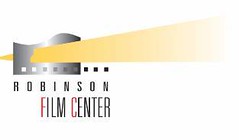
Volunteers needed for outdoors, downtown Shreveport movie produced by Robinson Film center
Originally uploaded by trudeau.
Hello, CMHS students,
I am looking for volunteers that will be willing to help with Movies & Moonbeams (see below). They would need to be at River View Park (in front of Sci-Port) around 4:30 or 5 pm to help set-up and then help with cokes & popcorn throughout the film. I was hoping you would ask your students if they would be interested in volunteering. I know this is asking a lot but I really feel like the students would be well placed since it is work like setting up tables and popping popcorn. However, I guarantee they’ll have fun.
Volunteers, would you please email me your name? cfrance@robinsonfilmcenter.org
Sincerely,
Clare France
"Movies & Moonbeams," an outdoor cinema program featuring family-friendly films projected on a huge inflatable screen with theater-quality picture and sound, will return Friday, March 3, in downtown Shreveport's Riverview Park with “Back To The Future”. Screening will begin at dark around 7 p.m. and the park is located on the Red River near Sci-Port. The program is meant to provide unique, low-cost entertainment opportunities for area families.
Presented by The Robinson Film Center, SPAR, and Shreveport Green, the program debuted to an audience of more than 400 in November of 2005. Admission to the film will be $1.00. Concession stand food will be available for purchase. To learn more and for a calendar of upcoming screenings go to www.moviesandmoonbeams.org
For more information, please contact the Robinson Film Center at (318) 424-9090
Wednesday, March 01, 2006
Roman Empire: all the lands surrounding the Mediterranean
From about 500 BC to 500 AD the Roman Empire grew to encompass control of the Mediterranean basin. In the process the organization and men of the Roman Legion became the world's most awesome force.
The month of March owes its name to Mars, the Roman god of war (martial).
At the peak of the empire was a golden era, a period of peace and prosperity called the Pax Romana ("peace of the Romans"). The Pax Romana began with the emperor Augustus Caesar, 27 BC, and continued to about 180 AD, acc to A History of the World (Perry).
Italian cuchina . . .
* Pasta shapes almost all have Italian names, such as tortellini and linguine. Try some canneloni!
* Calamari is fried squid, a popular appetizer.
* Alfredo was a chef in Rome who wowed diners when he mixed a rich, cream & cheese sauce at tableside. Poured over pasta, the classic dish became famous as Fettucini Alfredo.
* Napoli claims to be home to the original pizza pie.
* Modena is home to 2 great Italian products: balsamic vinegar and the Ferrari.
* Piper nigrum, black pepper, was worth its weight in gold when it had to be brought to Europe from the Spice islands (region encompassing India, Indonesia, etc).
* Scylla and Charybdis, the twin dangers of a 6-headed monster and a ship-eating whirlpool, was located in the Straits of Messina.
The lira is no longer the currency of Italy. They use the Euro (today a Euro is worth more than a USD). Why did the nations of Western Europe band together in the European Union? The better to compete with the US and China in business ventures. An example is the successful passenger airplane manufacturing company called Airbus. While headquartered in France, Airbus is a partnership comprising several Euro nations. To see their technology, find the Airbus 380, an 800-seat airliner planned for 2008.
Independent work:
Research the Yellow Pages to compare the number of local restaurants under the categories of Tex-Mex, Italian and Chinese. Which seems to be the most popular with local diners?
The month of March owes its name to Mars, the Roman god of war (martial).
At the peak of the empire was a golden era, a period of peace and prosperity called the Pax Romana ("peace of the Romans"). The Pax Romana began with the emperor Augustus Caesar, 27 BC, and continued to about 180 AD, acc to A History of the World (Perry).
Italian cuchina . . .
* Pasta shapes almost all have Italian names, such as tortellini and linguine. Try some canneloni!
* Calamari is fried squid, a popular appetizer.
* Alfredo was a chef in Rome who wowed diners when he mixed a rich, cream & cheese sauce at tableside. Poured over pasta, the classic dish became famous as Fettucini Alfredo.
* Napoli claims to be home to the original pizza pie.
* Modena is home to 2 great Italian products: balsamic vinegar and the Ferrari.
* Piper nigrum, black pepper, was worth its weight in gold when it had to be brought to Europe from the Spice islands (region encompassing India, Indonesia, etc).
* Scylla and Charybdis, the twin dangers of a 6-headed monster and a ship-eating whirlpool, was located in the Straits of Messina.
The lira is no longer the currency of Italy. They use the Euro (today a Euro is worth more than a USD). Why did the nations of Western Europe band together in the European Union? The better to compete with the US and China in business ventures. An example is the successful passenger airplane manufacturing company called Airbus. While headquartered in France, Airbus is a partnership comprising several Euro nations. To see their technology, find the Airbus 380, an 800-seat airliner planned for 2008.
Independent work:
Research the Yellow Pages to compare the number of local restaurants under the categories of Tex-Mex, Italian and Chinese. Which seems to be the most popular with local diners?
Subscribe to:
Posts (Atom)
